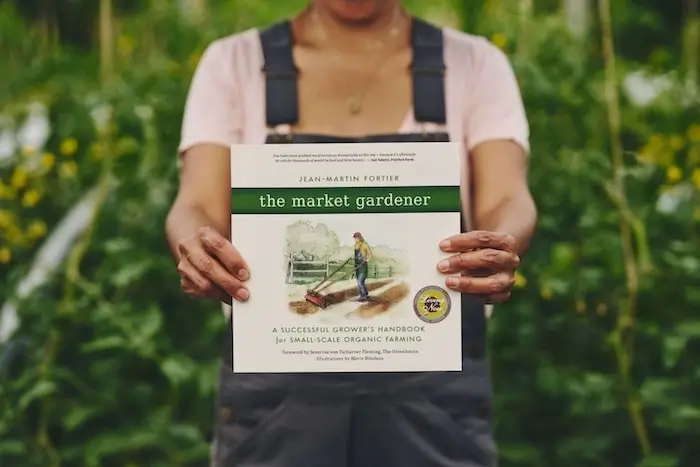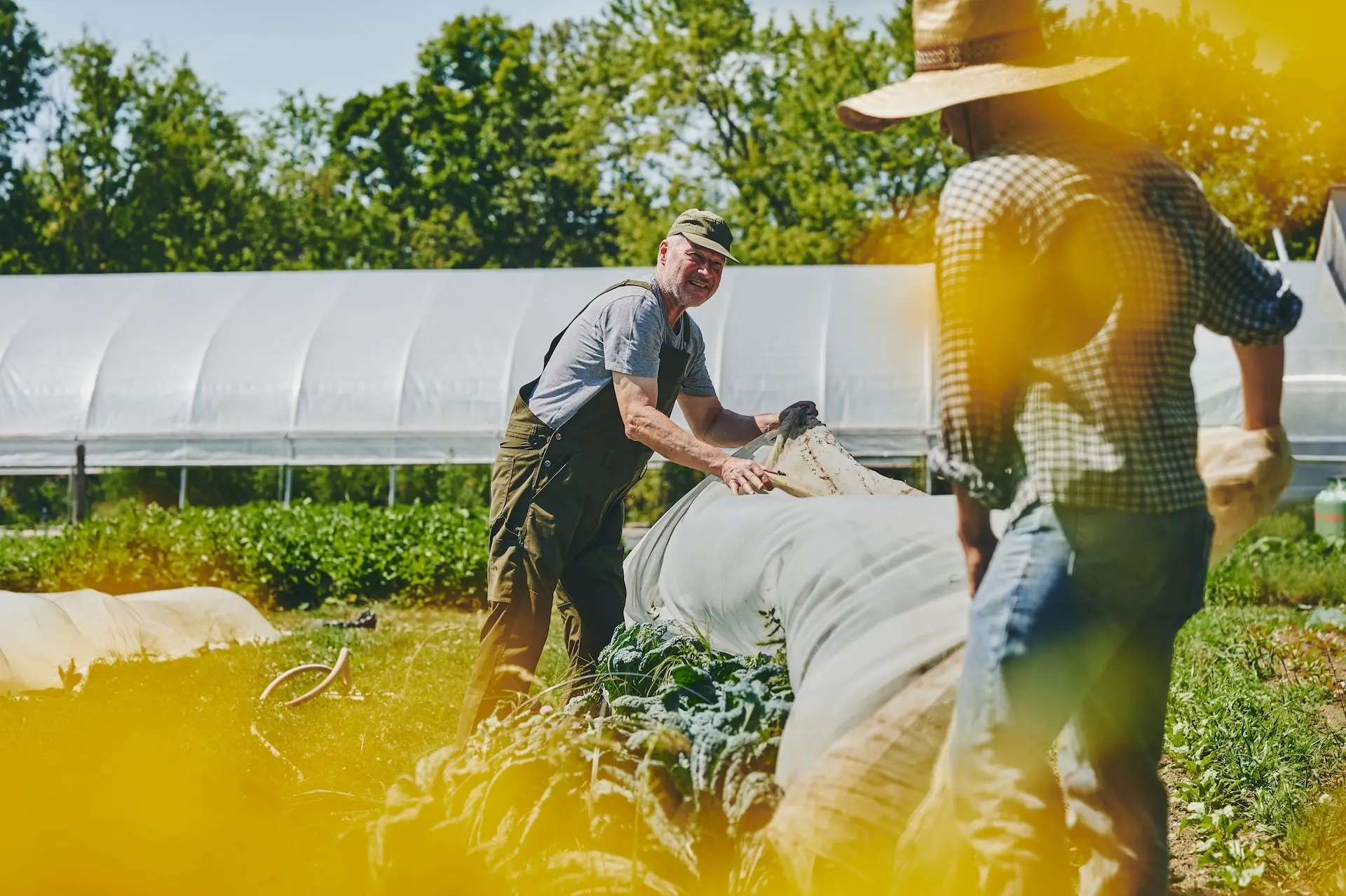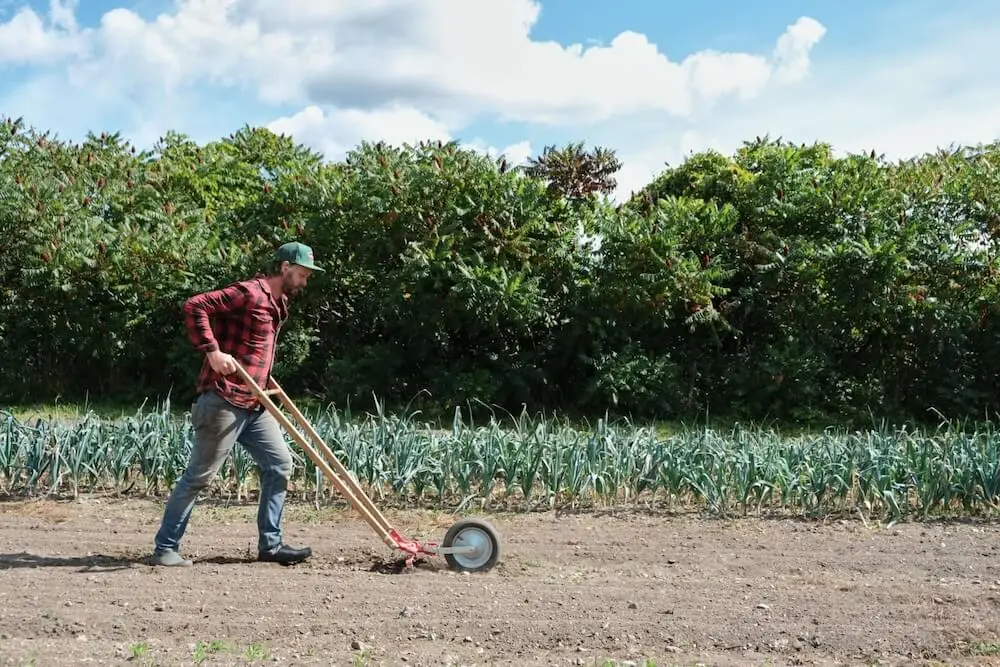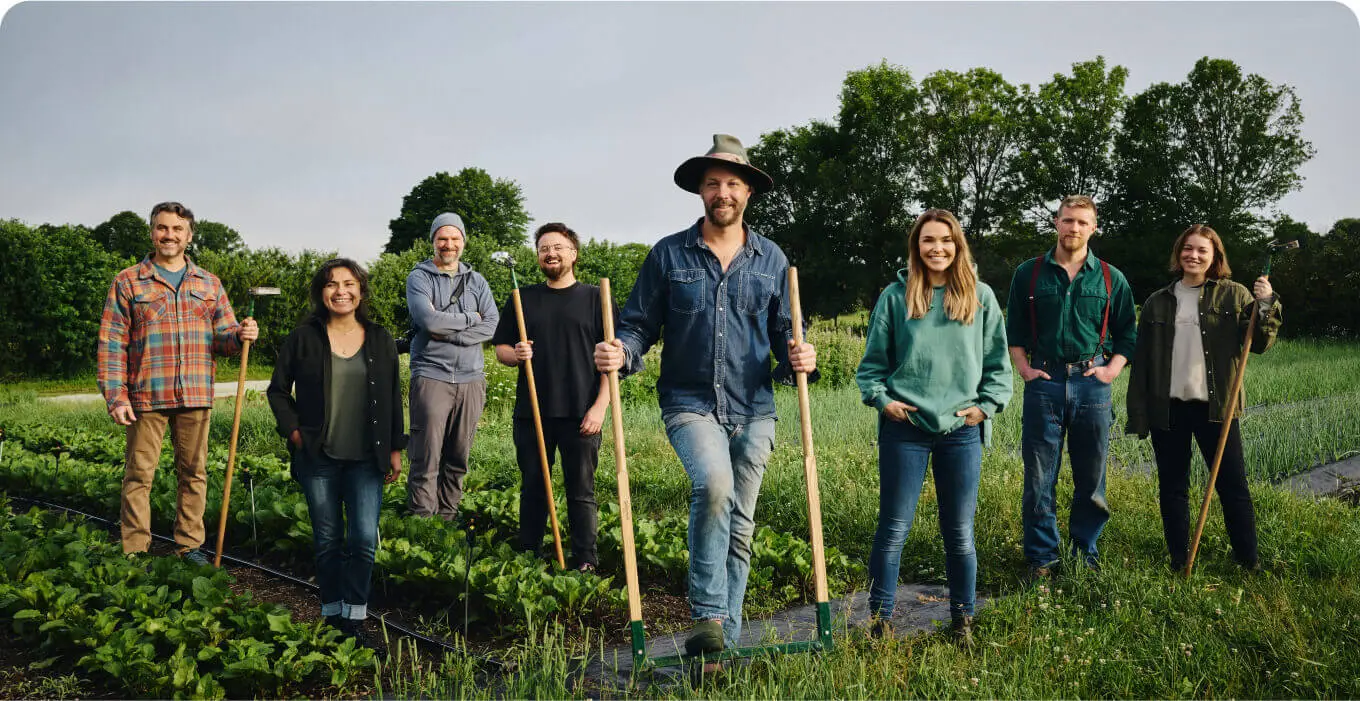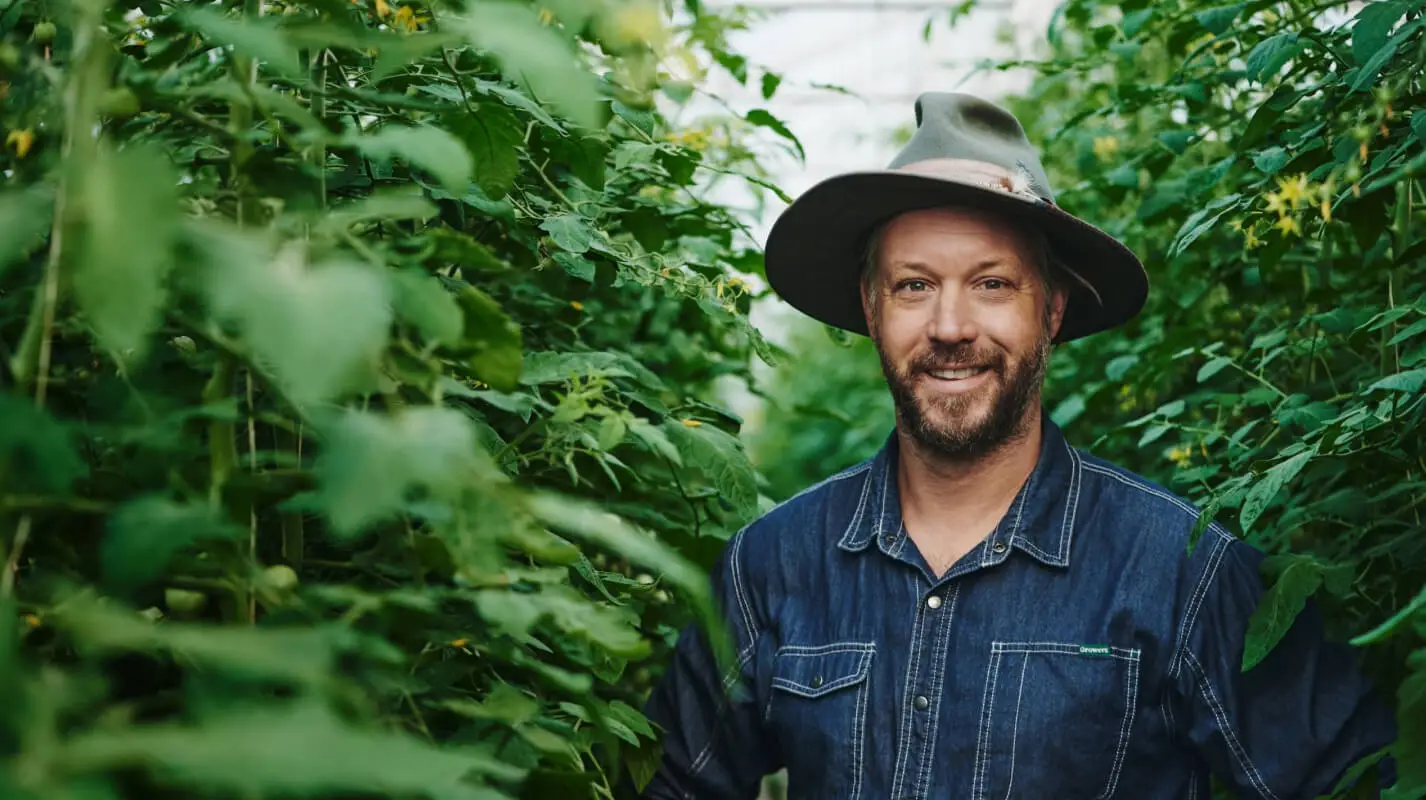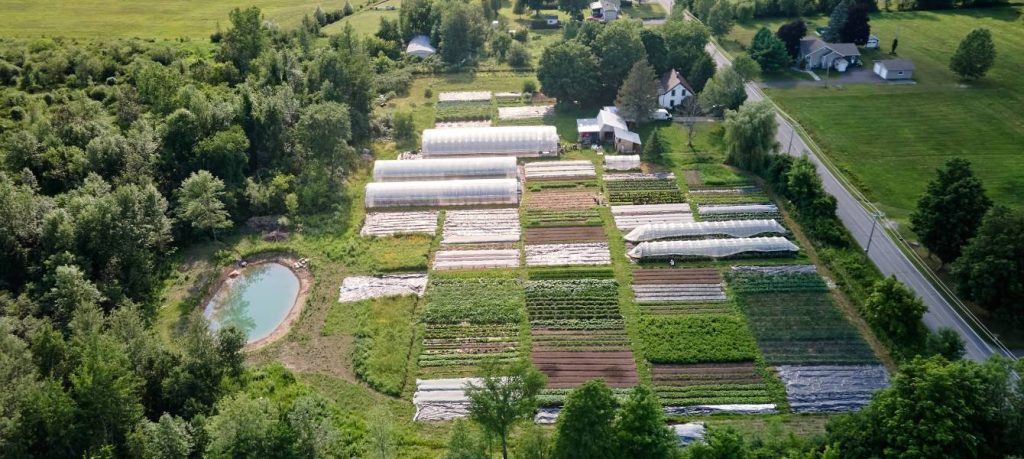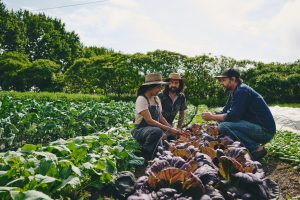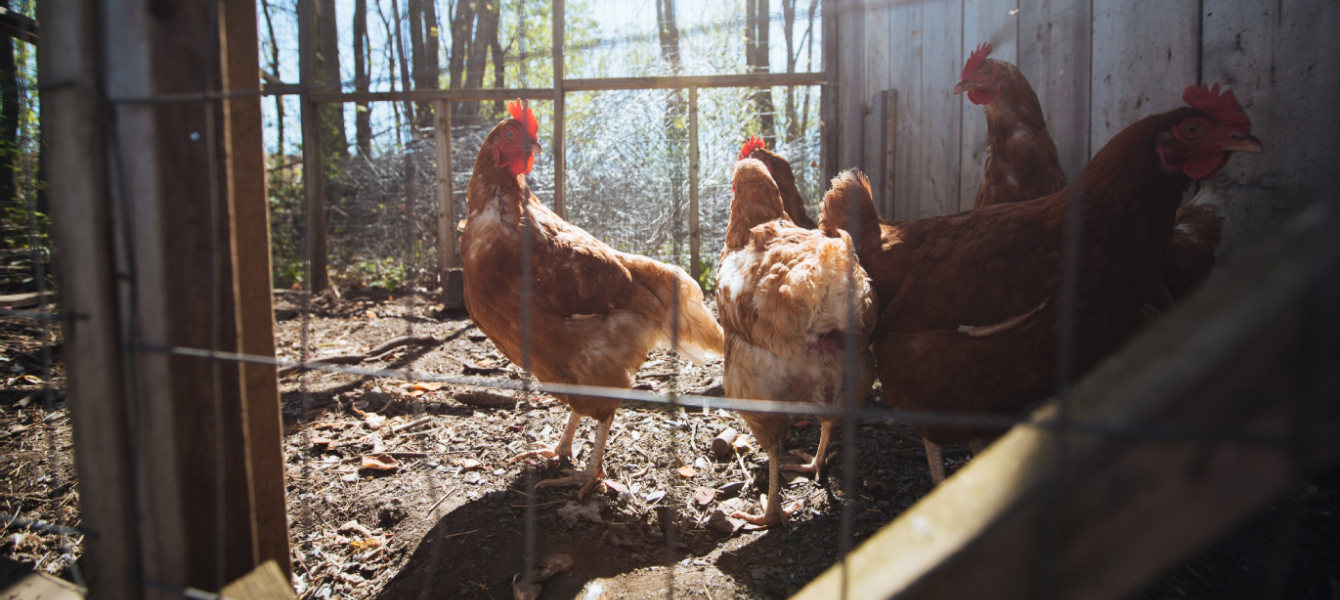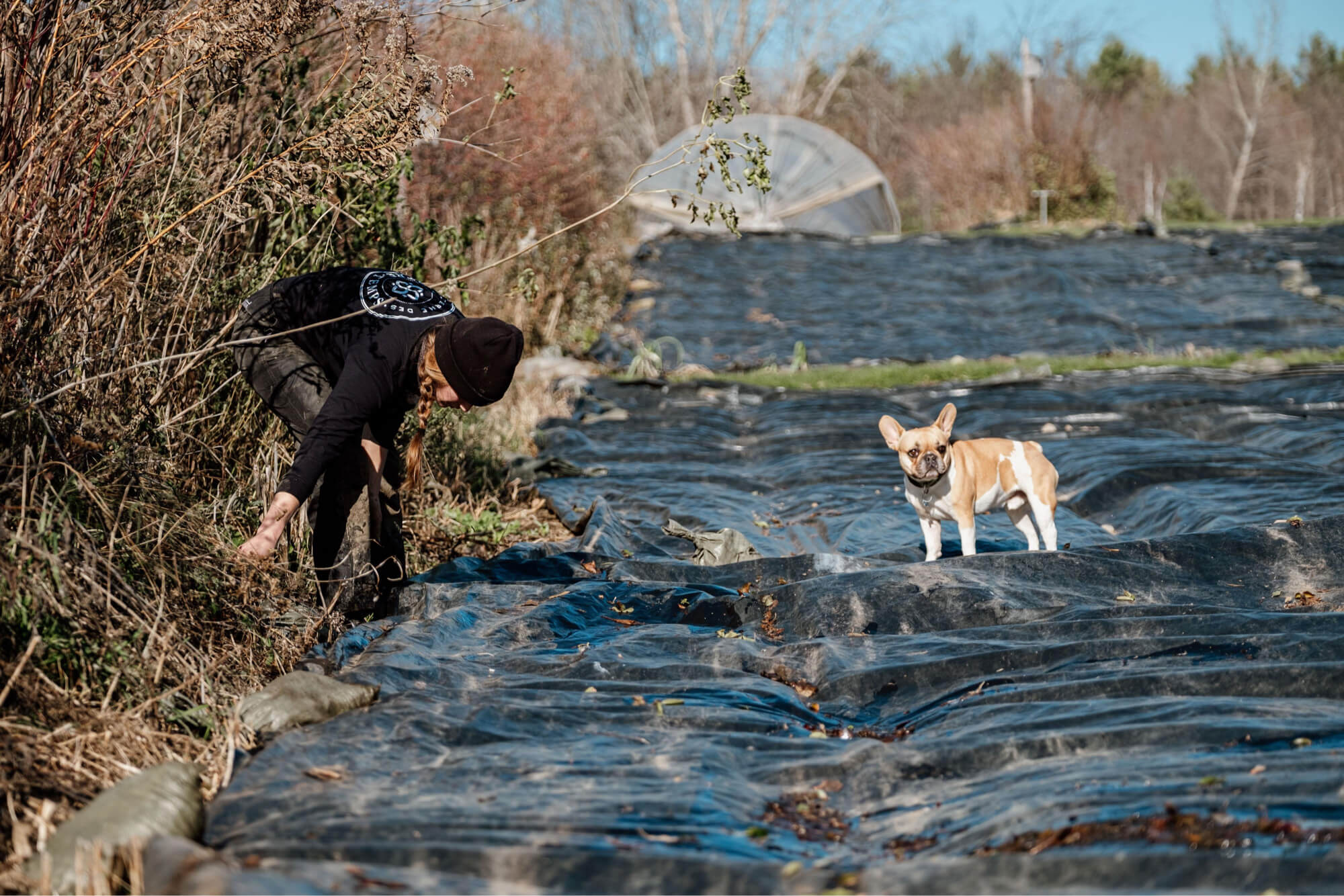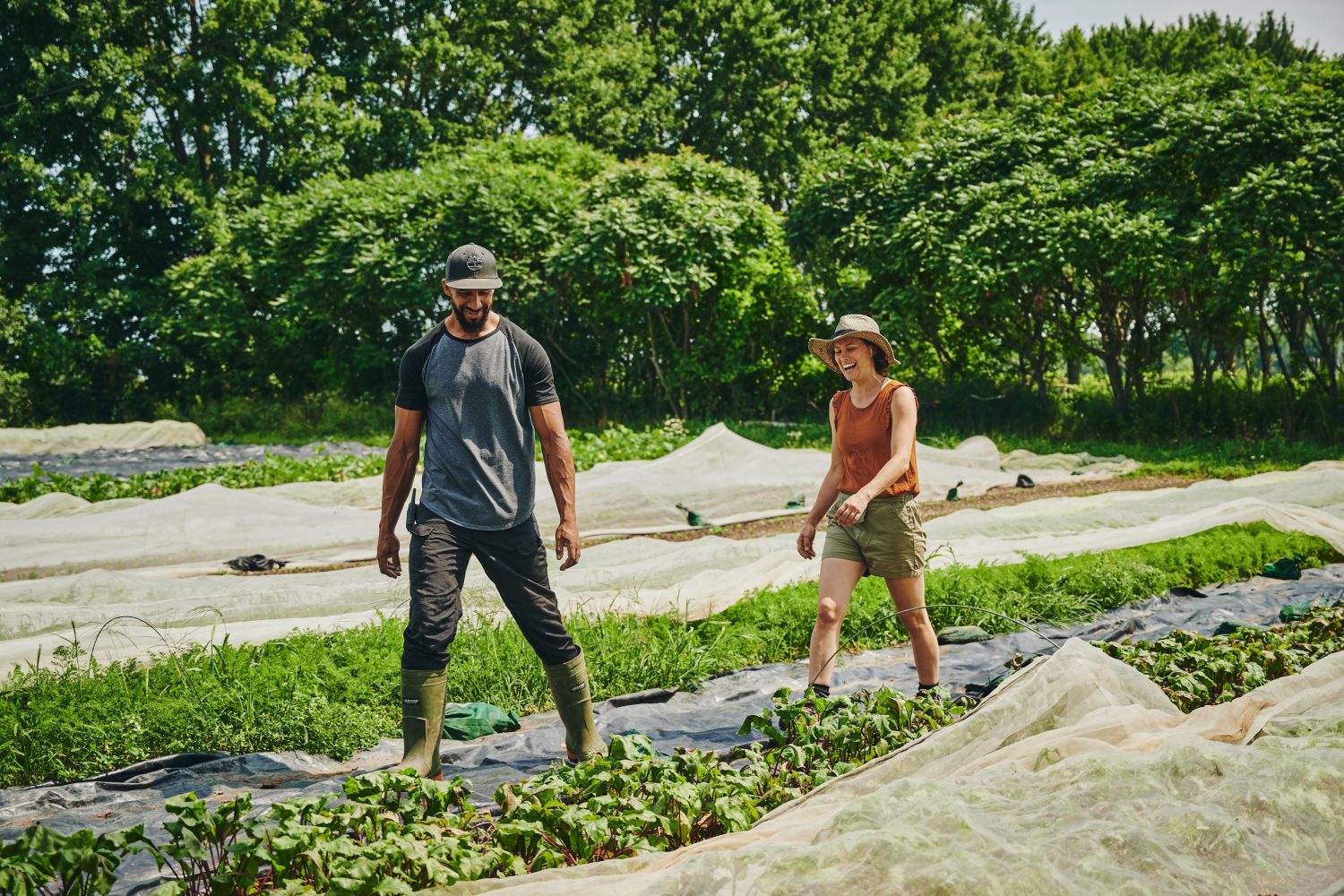Once you’ve developed your core farming skills, what’s the next most important step to building a thriving market garden?
It’s the question we hear most often at the Market Gardener Institute.
There are many possible answers, but if you ask master grower Jean-Martin Fortier, he’ll tell you plainly:
“Finding the right site makes all the difference.”
Prefer to watch instead of read? In this video, Jean-Martin Fortier walks you through the 6 key elements that define great farmland, so you can choose a site that truly supports your success as a grower
Over the past few years, our research team has connected with thousands of growers around the world and recently conducted a deep dive into this exact topic: what defines the best land for farming? While there’s no such thing as the perfect piece of farmland, there are some key factors that matter greatly depending on what you plan to grow, how big you want your operation to be, and who your customers are.
If you don’t think carefully about your site, it’s easy to make a well-intentioned but costly mistake. Falling in love with a picturesque property five hours from your closest market might not be ideal. On the flip side, farmland located right near your buyers might not be productive enough to grow healthy vegetables. Trust us—these are decisions that can make or break a new farm business and lead to unnecessary debt.
So what defines a good farmland? Beyond whether you have land access through family or a lease, take your time to visit multiple sites and evaluate the following:
1.Understanding Soil Fertility Before Choosing the Best Land for Farming
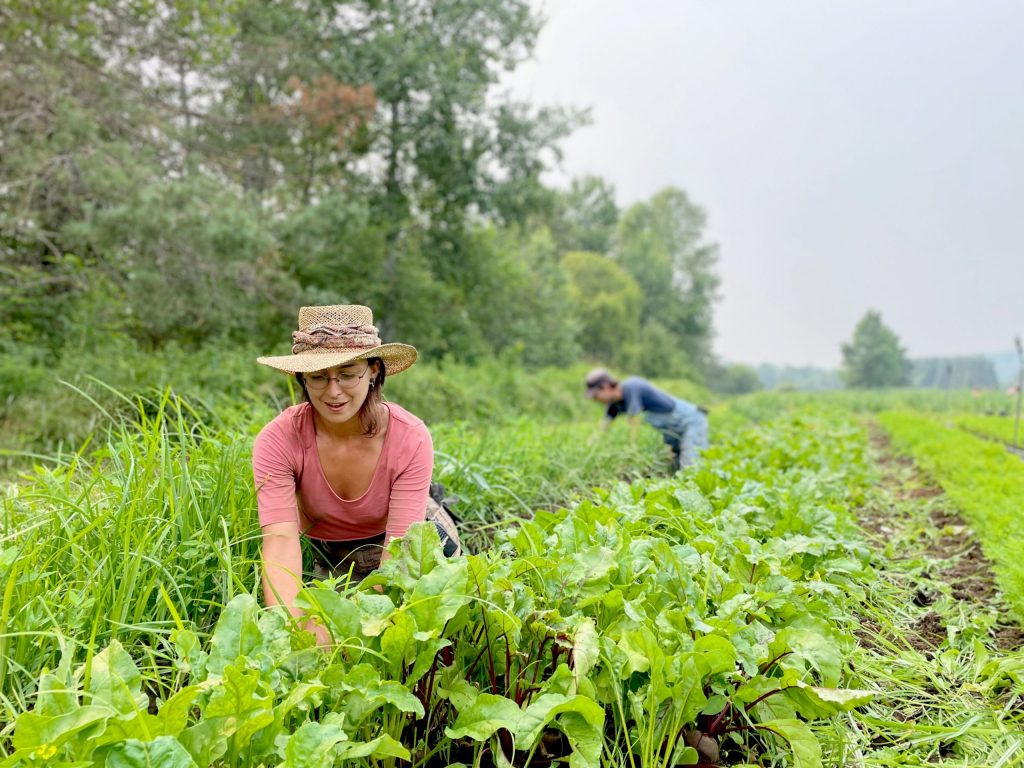
Let’s begin with the foundation of all successful organic farming: the soil. Rich, healthy soil is what makes everything else possible. When evaluating land, it’s natural to hope for that ideal mix—loose texture, good drainage, and lots of organic matter. These are often seen as essential traits in what defines a good farmland. And yes, if you’re able to do a soil test before buying or leasing a piece of land, you absolutely should. It will help you understand the pH, nutrient levels, and any potential contaminants you might be dealing with.
But what if the soil isn’t great to begin with? Is that a deal breaker?
If you ask Jean-Martin Fortier, he’ll tell you—absolutely not. Market gardening isn’t about finding perfect soil; it’s about building it. With time, effort, and the right techniques, you can create incredible soil, even on a site that starts out poor or depleted. That’s the power of organic matter—compost, cover crops, mulch, and living roots. With a bit of sweat, and sometimes a few truckloads of compost or organic amendments, soil can be transformed in just a few seasons.
Of course, if you only have access to land for a short term, then finding a site with a decent starting point makes your job easier. For growers seeking the best land for farming, factors like existing fertility and structure can certainly give a head start. But if you’re in this for the long haul, soil quality at the outset shouldn’t hold you back. What matters most is your willingness to invest in the soil-building process. As we often say at the Institute: don’t look for perfect soil—look for soil with potential.
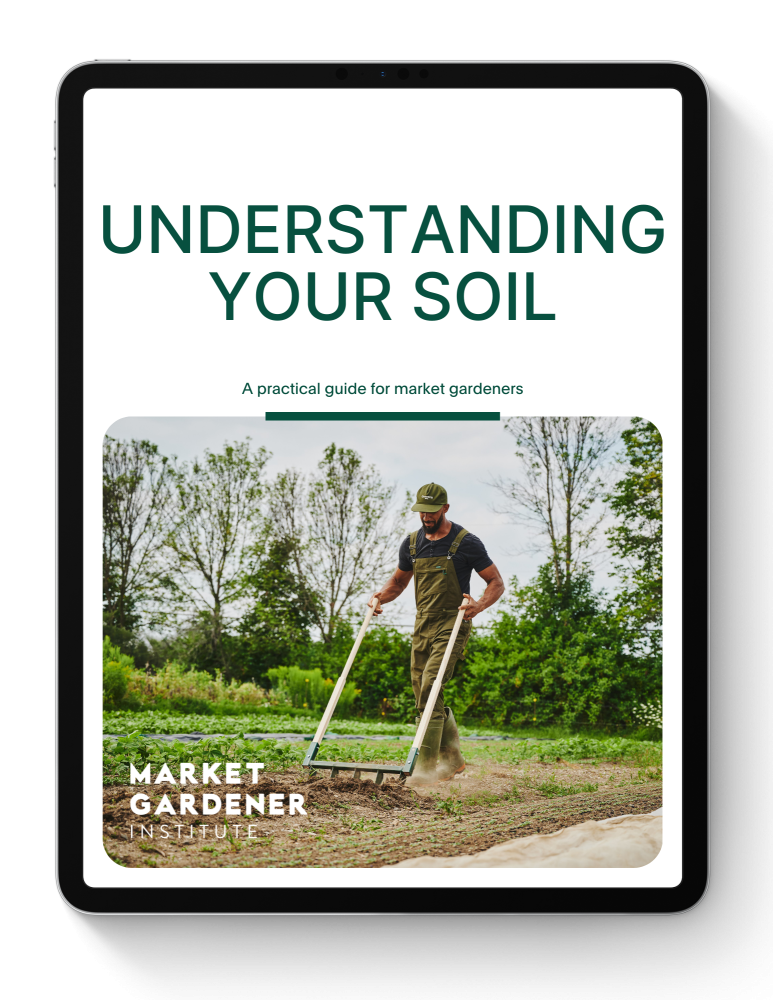
Download our free ebook and start testing and analyzing your soil at home with simple, proven methods.
Curious about how to build soil health from scratch? Download our free eBook:
2. Is Climate The Second Most Important Factor To Consider When Choosing The Best Land For Farming?
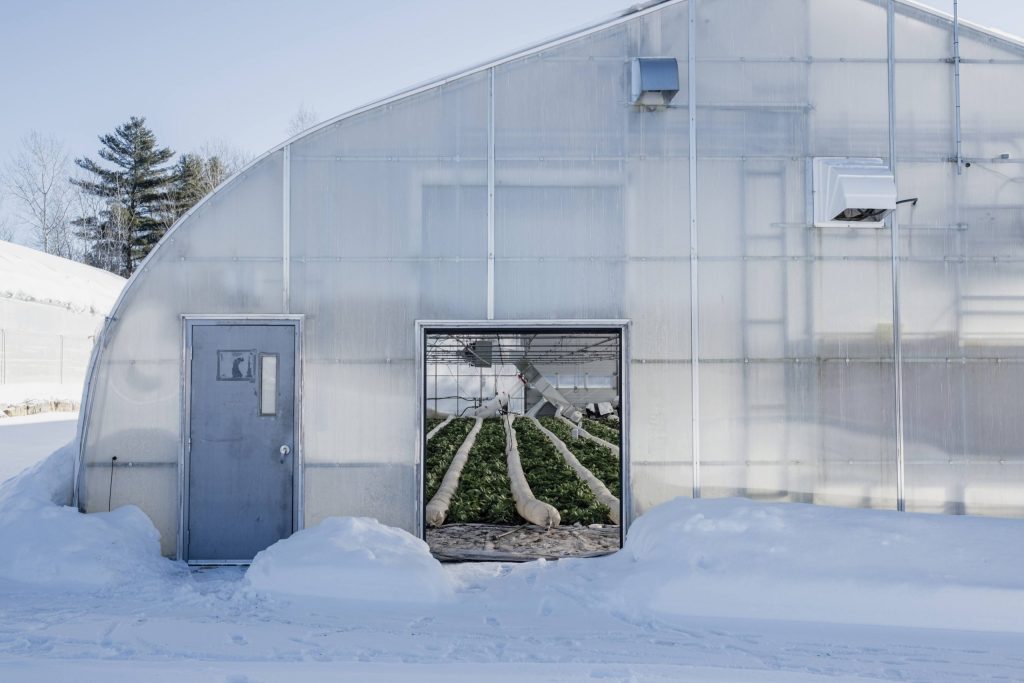
After soil, climate is one of the most important factors shaping how and what you can grow. It influences everything—from your planting calendar to the kinds of crops that will thrive. Your region’s number of frost-free days, average temperatures, and seasonal rhythms will still guide many of your decisions. Will you be working with long, mild springs or short growing windows tucked between harsh winters? Are hot, dry summers the norm—or do you get regular rainfall and cool nights? These are all important questions to ask when evaluating land, especially if you’re trying to identify the best land for farming based on long-term productivity.
But here’s the real question: is climate a deal breaker when it comes to starting a market garden? Honestly—no. Not necessarily.
What sets market gardening apart from conventional vegetable production is the way it integrates season extension into the core design. With the right tools—like caterpillar tunnels, mini-tunnels, floating row covers, or even a small greenhouse—you can protect crops and stretch your growing window in almost any climate. And unlike larger farms managing 5 to 10 acres, a market garden of one to two acres can be entirely or nearly entirely covered when needed. That’s where the magic happens. You’re not relying on a perfect weather pattern; you’re optimizing every square foot, every week of the season, with protection and planning built in.
So while it’s smart to understand your climate zone and plan accordingly, it’s also empowering to realize that it doesn’t have to limit you. With the right infrastructure and systems, nearly any region can become fertile ground for success.
Is flat land better for farming?
The short answer is : it depends. Flat land does make bed layout and mechanization simpler, and it’s often desirable for large-scale operations. But it also tends to come with a higher price tag and is more vulnerable to waterlogging in wet years. Some of the most inspiring and productive small farms we’ve visited are located on hilly or uneven ground. With smart design, even awkward parcels can be transformed into highly efficient microclimates. Don’t be afraid of a little slope—especially if the land offers good sun exposure and manageable terrain.
3. Finding the Right Size for Your Farm: Less Land, More Intentionality
One of the biggest misconceptions among aspiring farmers is the idea that you need a lot of land to make a living. But in reality, what defines a good farmland often points to the opposite. More land doesn’t always mean more success—it usually means more complexity, more infrastructure, and more time spent trying to stay on top of everything. Before committing to a parcel of land, it’s worth asking yourself a few tough but essential questions: What can I realistically manage, both physically and financially? How much of my time will be available for farming? Who else will be involved in the day-to-day work? Will we be raising animals, growing vegetables, or both? And how many people are we ultimately hoping to feed—just ourselves, or a broader community?
Jean-Martin Fortier’s approach, as outlined in The Market Gardener, is based on the idea that two acres or less, when managed intensively and intentionally, can produce both an abundant harvest and a viable income, without the need for a tractor or large machinery. It’s a reminder that success doesn’t come from going big, but from going deep: refining systems, growing high-value crops, and optimizing every step of the process. Even a single acre, managed well, can keep one grower fully occupied. And once you start adding staff—whether part-time helpers or seasonal volunteers—your role shifts from farmer to manager, which comes with its own learning curve.
The right amount of land, then, is not just about what you dream of managing—it’s about what you can actually care for, day in and day out. And often, starting smaller leads to much greater success in the long run.
4. Water is A Non-Negotiable When Choosing The Best Land For Farming
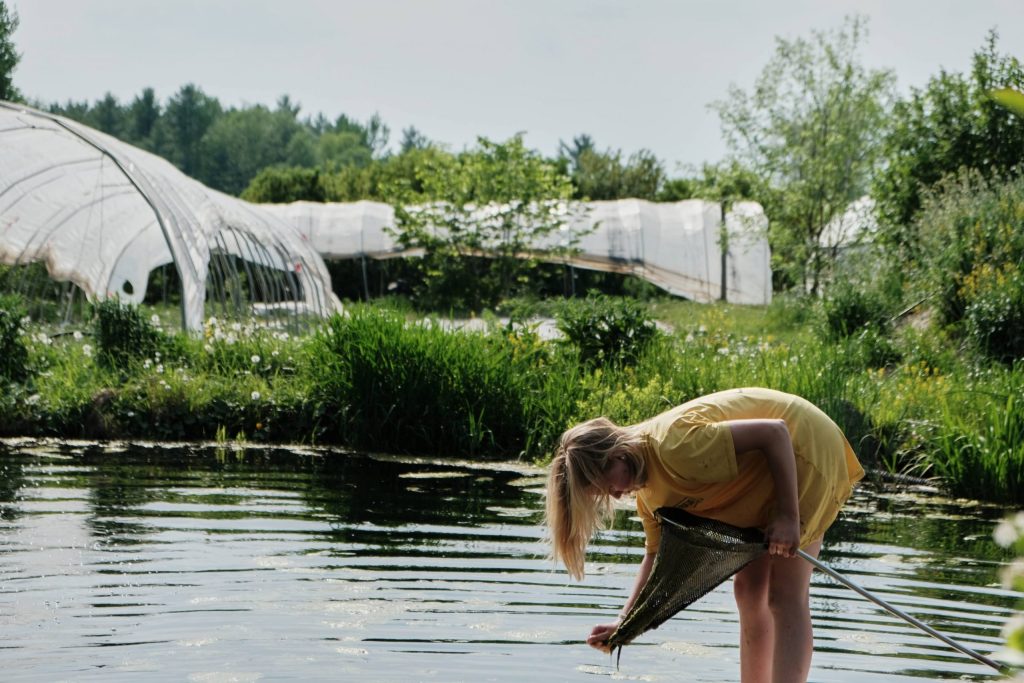
If there’s one thing that absolutely cannot be overlooked when choosing the best land for farming, it’s water. You can build fertility over time, extend your season with low-tech structures, and even make a modest plot incredibly productive—but without water, none of it works. In market gardening, the goal is to grow high volumes of vegetables on small acreage. That kind of intensive production depends entirely on reliable, consistent access to water, especially during transplanting, germination, and dry spells.
Whether you’re direct-seeding or transplanting, every crop will need regular irrigation to thrive. And while rainfall may seem dependable, the reality of climate change is shifting that expectation. Heat waves, erratic precipitation, and longer dry periods are becoming the norm in many regions. That’s why having a secure source of water—whether it’s a well, pond, reservoir, or access to municipal supply—is an essential foundation of your farm design.
If you’re farming under one acre, a good well might meet your needs. But for larger operations, especially those pushing for high-yield production, you’ll likely need to think bigger. Drawing from a pond or small river can be a great solution, but it comes with its own considerations: permitting, pumping infrastructure, water storage, and cost. The key is to assess this before you plant anything. Your irrigation plan should be part of your farm’s DNA from day one.
Just as important as access to water is the land’s ability to manage it. Too much water in the wrong place—or at the wrong time—can be just as harmful as not enough. This is especially true in regions like the northeastern U.S. and Canada, where heavy spring rains and snowmelt can saturate the soil. Poor drainage delays planting, stresses transplants, and limits your window to get things in the ground.
👉 Want to dive deeper into how water shapes your market garden’s success? Watch this video :
5. Selling What You Grow: Why Market Access Is Everything
If there’s one thing Jean-Martin often says to his apprentices, it’s this: “Growing is only half the job.” And he’s right. The other half—the part that’s just as essential—is selling what you grow. At the Market Gardener Institute, we’ve seen this truth play out again and again: you can be a skilled grower with beautiful produce, but if you don’t have access to a solid customer base, your farm business simply can’t thrive.
Market gardening works because it’s built on direct sales. You’re not relying on middlemen, grocery stores, or wholesale buyers. Instead, you’re connecting with real people who care about where their food comes from. That’s what allows small-scale growers to make a real living on a small footprint. But for that to work, you need to be close to the kind of community that values fresh, local, organic food—and is willing to support it. In fact, proximity to a strong local market may be just as important as soil quality when evaluating what type of land is best for farming.
Before choosing land, take a step back and study the local food culture. Are there farmers’ markets nearby? Restaurants looking to source locally? CSAs or food hubs? What kind of demand already exists—and just as importantly, what’s missing? These are the clues that help you identify your potential niche and how you’ll fit into the existing ecosystem.
Proximity is key. If your nearest customers are two hours away, that’s a lot of time off the farm every week. And over time, that adds up—not just in fuel and logistics, but in physical and emotional energy. We’ve seen more than a few new farmers burn out simply because they underestimated the strain of getting their product to market. When you’re just starting out, choosing land near your customer base can make or break your success, and helps define what type of land is best for farming from a practical perspective.
The good news is you don’t need a massive audience to make market gardening work. Depending on the scale of your farm, anywhere from 150 to 3,000 loyal customers can be enough to support your business. That’s totally achievable in a small town or urban fringe with the right marketing, presence, and product mix. But if you’re deep in the countryside, without a clear plan for distribution, even a great harvest might sit unsold.
As JM often reminds us, a productive farm is only as strong as the market behind it. You need land that not only grows food well—but allows you to sell that food easily, consistently, and at a price that reflects your efforts. Because that’s what makes this model sustainable—not just for the soil, but for the grower too.
Get your free checklist to prep like a pro for market day. Download it here!
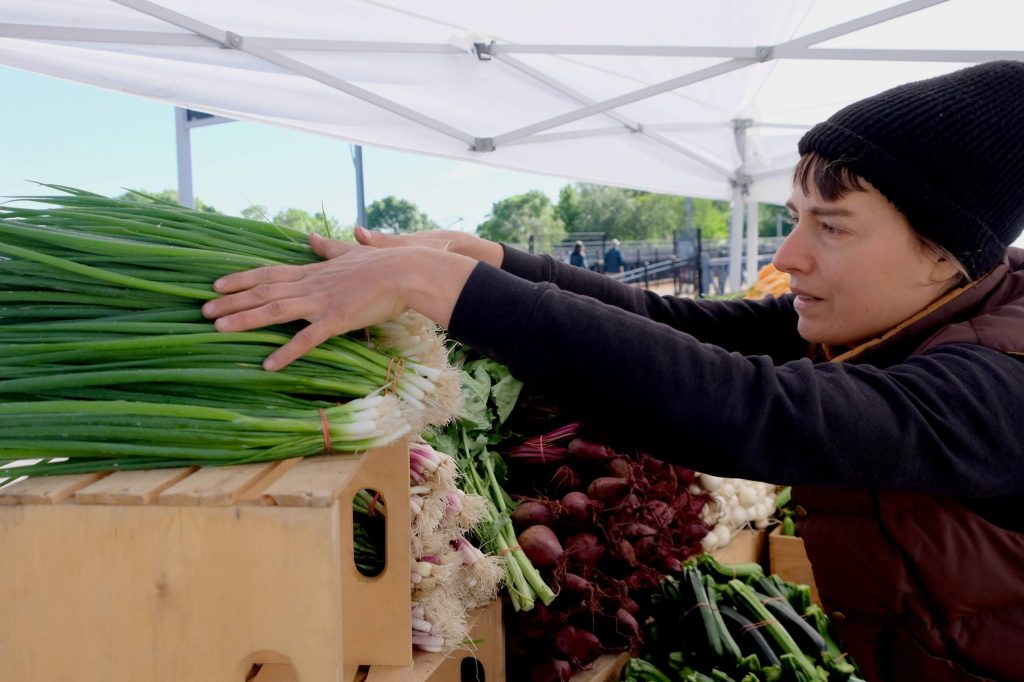
6. The Final Filter: Where Do You Actually Want to Live?
As we continue guiding growers through the process of selecting land, one core insight keeps resurfacing: the farm isn’t just where you work. It’s where you live your life. And that simple truth should shape every decision you make. Before evaluating a property based on soil tests or water access, take a moment to zoom out and ask yourself: Is this where I want to build my days? Because what type of land is best for farming isn’t just about soil and infrastructure—it’s also about your quality of life.
It’s easy to get caught up in the technical side of things—climate zones, acreage, drainage. But there’s something more subtle, and often more powerful, that determines whether a farm will thrive: the life you’re able to build around it. That means thinking about your daily rhythms beyond the crops. Where will your kids go to school? Is there a local grocery store, café, or library nearby? Will you be able to go out for a meal, meet up with friends, or find a dentist, mechanic, or community center when you need one?
Farming can be a deeply fulfilling path, but it can also be isolating if you’re not intentional about where you plant your roots. Do you imagine your life woven into a vibrant rural town, with farmers’ markets and a culture that embraces local food? Or do you see yourself on the fringe of a city, with easy access to both customers and community amenities? These are not minor considerations. In fact, choosing the right community may be the most important part of choosing the best land for farming.
At the Market Gardener Institute, we’ve watched many successful farms grow from land that, on paper, seemed unremarkable—but was located in a community that offered support, connection, and belonging. And we’ve seen the opposite too: beautiful soil and great infrastructure can still fall short if you feel disconnected, unsupported, or simply too far from the things that bring joy and balance to your everyday life. These real-life examples help redefine what type of land is best for farming by showing that community and context matter as much as physical conditions.
So, before you decide on a piece of land, go spend time in the area. Visit the local farmers’ market. Have coffee at the corner café. Chat with people. Ask yourself if you can picture building not just a farm, but a life there. When those two align, you’re much closer to finding the best land for farming for your unique journey.
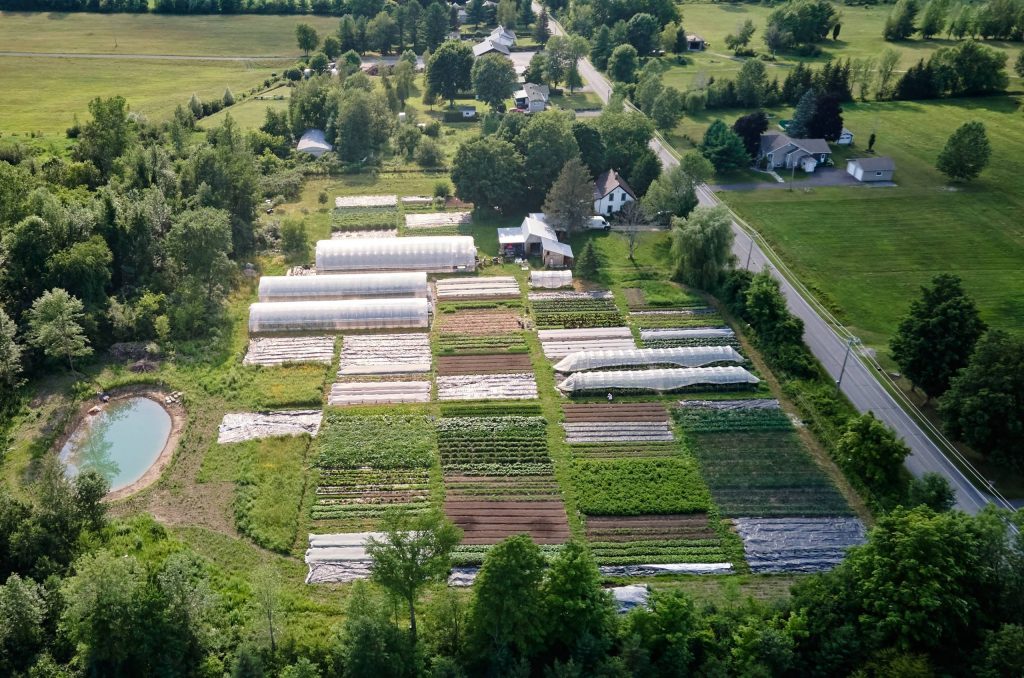
Final Thoughts
At the end of the day, choosing farmland isn’t about finding the perfect property. It’s about unlocking potential—in the land, in your lifestyle, and in yourself as a grower. The six factors we’ve explored in this post—soil, climate, water, size, market access, and community—are not a checklist to be rigidly followed, but a lens through which to ask better questions.
What matters most is that the land you choose supports your goals, your values, and your way of life. It offers enough of a starting point to build from, and enough promise to believe in.
Because what looks “good enough” today might, with care and commitment, become the exact right place for your farm to grow—and for you to grow along with it.
If you’re dreaming of starting a biointensive small-scale farm, we’ve put together an Introduction to market gardening course specifically designed to give you the basics of how to do it and understand the fundamental principles.
If you are ready to start your own market garden and are looking for more advanced information, you should join our signature program: the Market Gardener Masterclass. The Masterclass is an online course that teaches the most effective and proven techniques to successfully operate a diversified small-scale farm. They will guarantee you consistent results, as well as help you make the most of your valuable time and keep your body in shape for years to come.

